Orderflows – Orderflows Inner Circle Video Club Access
$199.00 Original price was: $199.00.$28.00Current price is: $28.00.
Proof of item:
Please contact us to get the sample
What will you learn?
Currently there are 56 recorded webinar trainings (new ones will be added as well): These are my personal trading strategies and tips. This is my proprietary information. While I tried to share as much as possible I realized that there is quite a bit I didn’t cover. Even in the Order Flow Trading Course, I shared more and more, but still there were many things I just didn’t have the time to put in as their concepts are more advanced.
Webinar 1 – POC
POC is an overlooked tool by many traders, but it reveals a lot about the market. Look for POC at certain locations at extremes of bars when a move has been made. If longer term money is involved in a move then it is probably more serious. And you will see POC migrating up in a move up as POC acts as support or POC migrating lower in a move down as POC acts as resistance.
This wave like action, with the POC moving up and up is often a sign of institutional activity.
Webinar 2 – Combining POC
How to using POC Trader to find better, more profitable trades. When you use POC Trader as a filter, or trigger, in combination with order flow you can get rid of bad trades. That is what you want to do as a trader is cut out the losing trades altogether.
Webinar 3 – Delta Analysis
The best kept secret of order flow trading. Very few traders understand how to use delta analysis in their trading. I know a handful of very successful traders relying on order flow delta as the cornerstone of their trading methodology.
I do several webinars digging deeper into delta so that you can get a better more solid understand of delta and how to apply it to your own style of trading.
Webinar 4 – Intra-bar Delta
Catching Internal Shifts In A Bar As They Happen. If there was just one aspect of order flow that you can use to improve your trading use delta. I am a big user of delta. In this presentation I explain the importance of Max Delta and Min Delta which not many people use or understand.
Delta is not a holy grail, but a very useful and effective tool in trading and with it you will be able to make much better trading decisions.
Webinar 5 – Running Delta
Running Delta – Identifying Waves Of Aggressive Activity. Buying and selling often comes in waves and if you can identify. When it happens you can often find good trading opportunities as it can be the start of a move. They always say do what the big traders do. But they don’t tell you how to see what the big traders are doing, by reading the “Running Delta” you can.
I find myself being opportunistic at times and applying the running delta idea I can easily identify areas for low risk trades. Will every trade be a winner? Of course not. But what you want to find is areas where you can have low risk entries with good upside potential.
Webinar 6 – Delta Candles ***Indicator This Webinar Based On NOT included.***
Delta Candles are bar delta transformed into Japanese Candlestick style bar. So instead of having to analyse a number, the delta number, a trader can visually see what is happening in the delta based on candlestick. It’s a different way to view delta.
If you have any experience with Japanese Candlestick analysis. You know there are certain candles and candle formations that you look for during the course of trading. Delta Candles are similar in that respect. You are looking for certain candles and candle formations to appear.
One of the key elements of candlestick trading that make them useful in warning of potential reversals is the occurrence of long wicks. Long wicks suggest price rejection and a potential failure of the market to continue in the same direction. When used with order flow, these candlestick patterns can be extremely effective signals.
Webinar 7 – Unfinished Business
When there is volume on the bid side and offer side at the extreme of a bar, that is called unfinished business. There are different reasons why unfinished business may occur. But the common consensus is that the price level should be revisited. I am not a fan of unfinished business and in this presentation I explain why.
Webinar 8 – Major Imbalances
A Major Imbalance is an imbalance occurring at a very high percentage. For example 1000%, as opposed to the more common, almost industry standard, 400%.
Major Imbalances highlight to you what the major players are doing or who is in control of the market. You can miss the next move or get caught on the wrong side of the market. Order flow, through major imbalances, reveal the big player’s activity. And therefore, their commitment in the market. Because large players cannot execute size orders instantly at favourable prices. The order flow reveals their entry into the market and gives you time to trade accordingly. This telegraphed information gives you almost the same advantages possessed by the initiating player. This is a powerful advantage over most technical signals that are almost always two bars late.
Webinar 9 – Longer Durations
Traders tend to think that order flow analysis is only for short term charts. Like 1 minute, 3 range, 100 tick charts, etc. But its not. You can use 15 minute charts, 30 minutes charts. Personally I don’t go beyond 30 minute charts. But it does need to be an intraday chart.
I look at the same things – stacked imbalances, ratios, delta, etc. This presentation will deal with stacked imbalanced on longer duration charts.
When a market generated level of support or resistance appears on a longer duration chart I tend to put a little more weight into it.
Webinar 10 – Hidden Aggression
Hidden aggression occurs what seems like out of nowhere. You are sitting there watching the market and then notice a big amount trade on the offer and sell off. Or the bid getting pounded and the market rallies. What is going on. Its what I call hidden aggression.
You never know when a big order is going to come across an institutional trader’s desk. When a bank gets an order to buy 3000 ES. Or Chevron does a deal in the crude oil cash market and now has to hedge the equivalent of 1500 lots.
Once you know what to look for in the order flow, spotting hidden aggression becomes easier. But sometimes it is so obvious, so clear that the market is screaming at you that you feel like an idiot if you don’t take the trade.
Webinar 11 – The Obvious
How often have you looked at a chart later in the day and think “I should have bought here, it was so obvious. Every trader needs to have a series of trades that they can go back look for on a daily basis, setups that work for them and suit their trading style.
There are many different ways to approach the market with order flow. I don’t expect you to apply everything 100% the way I do. What I hope you do is take away what I explain and apply it to your own trading method.
Here are 4 setups that I look for on a daily basis on every chart I watch:
They are: (revealed in video)
I call these setups The Obvious because when you look at the move afterwards you will say to yourself “It was so Obvious.
Webinar 12 – Zero Prints
In this presentation I discuss a phenomena that I have not shared with the trading public before. It is what I call Zero Prints. They often occur as the market is moving fast or when the market is just about to make a big move. Zero prints happen because a trader is often sweeping the market and getting his position on.
If you are not familiar with sweeping the market, it is the activity of a trader who buys through the offer or sells through the bid. Often when a big trader anticipates a big move soon they will sweep the market. It is not something that retails traders do.
There are two types of zero prints that I discuss.
Zero prints do not occur very often, but when they do they often lead to nice quick moves which as a trader you want. One of your trading goals should be to get in and out with your profit as fast as possible.
Webinar 13 – Extreme POC
I have discussed the importance of POC before but I have been getting questions regarding what I mean by Extreme POC so I have devoted this entire presentation to explain it and answer your questions.
An Extreme POC is a reversal signal. It is stopping volume in the market. It can come after a move or it can come off a bounce.
Not every trader will get value of Extreme POC, if you are a short term trader you will find it a great tool to add to your trading tool box. If you are a longer term (over 5 minute chart) trader then you will not get very many signals. If you are trading a 3, 4 or 5 range chart or a 1 minute chart trader then you will want to seriously consider it in your trading.
Webinar 14 – The Flip Part 1 ***Indicator This Webinar Based On NOT included.***
This is the first presentation about The Flip indicator. Honestly, I don’t talk about the indicator much actually, what I talk about is the guy known as The Flipper, Paul Rotter and then I discuss about spoofing in the market and how it is done. It is illegal but I do think it is done in some form. Anytime there is money to be made, there will always be that element of society that will try and skirt the rules.
But the point of the presentation is to give you a back ground on how orders affect the supply and demand structure of the market. Orders going into the order book only show a trader’s intent, while actual trades show a traders commitment to the market.
In retrospect I probably should have titled this presentation – Spoofing.
Webinar 15 – The Flip Part 2 ***Indicator This Webinar Based On NOT included.***
This is the second presentation about The Flip indicator which is available for download in the members area.
The Flip indicator measures acute changes in aggressive buyers/sellers through the final delta, max delta and min delta. It is designed to find the changes in direction that the market should continue in.
In the Orderflows flip what it looks for 4 distinct instances of market activity. Flip A and Flip B.
1. The market gets pushed down with extreme selling and then comes right back up with extreme buying. Flip A buying.
2. The market pops up with extreme buying and then comes right back down with extreme selling. Flip A selling.
3. The market gets pushed down with extreme selling, pauses and then comes right back up with extreme buying. Flip B buying.
4. The market pops up with extreme buying, pauses and then comes right back down with extreme selling. Flip B selling.
I treat signals for Flip A and Flip B the same.
Webinar 16 – The Flip Part 3 ***Indicator This Webinar Based On NOT included.***
In this follow up presentation I discuss more about the settings and what they mean and how you can experiment with them in you were to.
There are more examples in this presentation using candlestick and bar charts.
Also I have uploaded a cheat sheet, which is something you should read regarding this indicator. I discuss my settings for CL, YM, FDAX, ZB, ES contracts and show the YM in actual trading when used with the POC trader on extremes.
Webinar 17 – Absorption
Absorption, what it is, how to recognize it and how to trade it.
If you turn on the TV you hear pundits saying the market is in “consolidation” but they never say “the market is in absorption”. Why not? I would venture to guess that those paid speaking heads don’t understand the true nature of the market.
Absorption and consolidation are similar in that price movements are limited, but there is a big difference in the way they are formed, absorption occurs with normal volume, consolidation often occurs in areas with little trading occurring.
When absorption occurs you want to be able to recognize it and potentially trade it as we come out of absorption. In order to do that you need to look for signs that we are coming out of absorption and in this presentation I will show you how to do that.
Webinar 18 – Bar Delta Divergence
Bar Delta Divergence occurs when the price action of a bar and the delta are going in opposite directions. This often leads to quick moves with decent profit potential.
Generally the price action of a bar and the delta go in the same direction, however there are instances when they go in opposite directions.
Bar Delta Divergence differs from standard Order Flow delta which is negative delta at a new/equal high or positive delta at a new/equal low. Instead Bar Delta Divergence is a red candle with positive delta or a green bar with negative delta. In short go in the direction of the candle. If it is a red candle look to trade from the short side. If it is a green candle look to trade from the long side.
Webinar 19 – 2nd Slot Imbalances
2nd slot imbalances occur when traders are late getting into a move and either look for a bounce to get back in or just late to get into the move.
It is good for a short term trade signal, definitely not something I would be looking to hold all day. Think of it as a an extra tool in your trading toolbox and when you see it, take advantage of it.
Webinar 20 – Valtos Transition ***Indicator This Webinar Based On NOT included.***
My newest indicator – The Valtos Transition.
What The Valtos Transition does is it looks for the areas when the market is transiting from supply driven to demand driven (a down move that changes to become an up move) or demand driven to supply driven (an up move that changes into a down move).
I have said this many, many times – markets do not move based on mathematical formulas. What I mean is markets don’t move because an oscillator crossed the zero line. Markets move based on supply and demand and how can you determine supply and demand? Look at what is trading.
Webinar 21 – Aligned POC
Aligned POC is market generated support / resistance level.
What I like about Aligned POC is 2 things: 1) Not many traders use POC in their analysis so it gives you an edge with information that is useful. Who wouldn’t want to trade with information that is available but not everyone is using? 2) It is a market generated support/resistance level which just happened and is probably not yet visible to every one else.
Think of Aligned POC like running. You run a few km then stop to catch your breath, while you decide to either turn around and go home or continue on in that direction.
Webinar 22 – Hidden Gaps
Hidden gaps occur during the trading day that are not immediately visible to the trading public because they are limited to their charting software. Order flow foot print charts allow you to see the areas where price moved through quickly.
Hidden gaps occur often in the normal course of trading and has significance in terms of price direction, reversal or momentum.
I use the term Hidden Gaps even though there may be some small trades at a level. It is not a True Gap in the purest sense of Gap analysis. When I get into the examples you will understand what I mean.
Generally, Hidden Gaps are emotionally driven events that occur largely because a big buyer (or seller) has come to the market to start buying up (selling) large quantities quickly.
Webinar 23 – Valtos U-Turn ***Indicator This Webinar Based On NOT included.***
The Valtos U-Turn is an indicator which reads the price action in the order flow and looks for the points where buyers or sellers have given up and the market has a tendency to reverse due to hidden supply or hidden demand.
What is hidden demand and hidden supply?
Hidden demand is high traded volume on the bid side.
Hidden supply is high traded volume on the offer side.
You hear the phrase “trapped traders” a lot these. Even though I think it is nothing more than a buzzword, there are instances when retail traders come to market late thinking it is going to go higher or lower only to run into hidden demand or hidden supply.
Webinar 24 – Trend Days
I discuss trend days and more importantly how to identify trend days early in the day so to position yourself on the right side of the market and not fight it.
You always hear “the trend is your friend.” or “Go with the trend.” But for most traders trying to identify when a trend is occurring is the difficult part.
I show you how to use Volume Profile, POC and value areas to determine if a trend is happening. The earlier you can identify a trend is about to happen, the more profit you can make.
Webinar 25 – Breakouts
I discuss Breakouts and how to order flow to confirm them.
Every time you start making new highs you should be asking yourself, will this market keep going higher? Will there be follow through and new highs made or is this high going to hold? Or if you are making new lows you should be asking the same question, will this low hold or are we going to keep on making new lows?
I used to be a breakout trader in my younger days. One of the major problems I had was knowing when a breakout would continue or fail. There is no worse feeling than buying the high of the day, someone has to do it. But the order flow can help give you clues that the market can keep going higher (or lower).
If you are just looking at a normal bar chart you won’t know what is going on in the order flow and you will suffer as a result of it by buying into weak breakouts or selling into weak breakdowns.
Webinar 26 – Candlesticks
How I use order flow imbalances with candlestick analysis.
The problem with trading with candlestick analysis is when patterns work they work great, but there are times when they fail as well. Of course you never hear about the failures from candlestick traders, instead you only hear of the winning trades “oh man, it was a beautiful engulfing pattern right off the low and then we rallied straight up to the highs.” Ok, well what about the times the engulfing patterns didn’t work? Radio silence.
In my trading I have always found two candlestick patterns to be effective in my trading. Whether it was Malaysian Palm Oil, Hang Seng or US 30-year bonds. The patterns are the shooting star and the hammer. But still there are times they failed. However if you apply order flow analysis to the candlestick analysis I found I was able to refine my trades and increase my win percentage as a result of eliminating the patterns that often failed.
Webinar 27 – Swing Trading
A decent portion of traders who want to learn order flow analysis come from a swing trading background. Swing traders trade around swing highs and swing lows which are essentially pivot levels.
When you have your own levels defined, levels that you are watching in the market and you see something in the order flow that is also confirming that level then you have a very powerful potential trading opportunity.
In this presentation I show how to combine swing levels with stacked imbalances in the order flow to find higher percentage trades. By combining these two methods of trading you can get out of potentially losing trades much earlier and in some cases even pass on trading some stacked imbalances altogether. But the times when a stacked imbalance is confirmed with a swing level or pivot you often have a highly successful trade on your hands.
Webinar 28 – Negative Development
Negative Development which is best described as market activity that is opposite of what is expected.
A very important aspect of trading that most traders fail to realize is what happens after you get into a trade. For a trade to move in your direction you need more traders coming into the market to push the market in your direction. Otherwise you can have the best system or best entry in the history of trading, but if there isn’t that follow through your trade won’t be successful.
One of the beautiful aspects of order flow is being able to pick up what is happening in the market. I have kids and one of their toys is a puzzle with a round peg, a square peg, a triangle and a star and each one goes into a particular slot. When you have the round peg you put it in the round hole. But there are times when you are holding the square peg and try to put it in the round hole you have a problem. You have to adjust and turn the puzzle to find the square hole. Market conditions change and you have to be able to adjust. You need to realize when you are holding the round peg but looking at the triangle hole. Traders that fail, don’t realize they needed to adjust their thinking.
If you are familiar with Market Profile you have probably heard the term “Minus Development” which is a bit different and I explain it in the presentation.
Webinar 29 – Discipline
What do you think the hardest part of trading is? Most people think the hardest thing about trading is the learning curve. But trading can be learned. I think the hardest thing about trading is something that can’t be taught, it is something that you either have or don’t have. We all have it to some degree and it is something that must be nurtured and developed and it is called discipline.
Discipline is something that traders have varying degrees of. It is an intangible. You can discipline yourself not to smoke or drink 1 beer when you go, but can you develop enough discipline to give a trade a chance to work out? Do you have discipline to take a loss?
This presentation I don’t discuss any trade setups, instead I focus on the psychological aspect of trading which is something just as important as a good trade setup.
Webinar 30 – Size Traders
I discuss how to look for the size traders in the order flow. Everyone says follow the big money as if it is easy to see decifer what they are doing. Most of the time you can’t tell when the big traders are active. But once in a while they leave clues that stick out like a sore thumb.
A problem I have when people say to follow the big money is how do you know if a big trade is getting into the market our liquidating a position? There is a huge difference.
Following the big money really matters in the short term or the extremely long term. In the short term you are concerned with the next few ticks to the next 30 minutes. In the long term you may be looking at weeks in position.
This video helps you to understand the pros and cons of “following the big money.”
Webinar 31 – Stops
The first book you ever picked up on traded told you that you must use stops.
While that is true, what they don’t tell you is how to properly place your stops.
Every trader has their own way of placing stops, but some make no sense.
Where should you place your stop? Its simple. You place it where the reason for being in the trade is no longer there.
A lot of traders place their stops too far away and that just eats their profits.
You want to keep your losses small, but to do that you need to keep your stop close.
If you stop is too close you can get stopped out too often, which is counter productive.
In this video I show you how you should approach your stop placement. You might be placing your stops too far away and not realize it.
Webinar 32 – Ratio Bounds Low
In this presentation I discuss ratio bounds low. It is the first part of a 4-part series on using order flow ratios in your trading.
Ratio bounds low is what I consider stopping volume or support in the market. It indicates heavy volume at the bottom of green candles (up bars) or at the top of red candles (down bars).
Take it in context of the market. You want to see ratio bounds low at the end of moves.
Think of it as resistance or support.
Webinar 33 – Ratio Bounds High
In this presentation I discuss ratio bounds high. It is the second part of a 4-part series on using order flow ratios in your trading.
Ratio bounds high indicate price rejection. Small volume at tops of down (red candles) bars or bottom of up (green candles) bars.
As prices move higher buying decreases until the last buyer(s) have finished buying. Or as a market moves lower the market keeps going lower until the last seller(s) have finished selling. Then the market turns.
Now keep in mind the market turns on different factors, it could be buying or selling has dried up which is price rejection. Or the market can be rallying until a big seller comes in with a lot of supply to sell which squash the buying and then the buyers become sellers.
Webinar 34 – Bollinger Bands
In this presentation I discuss combining ratios with Bollinger Bands. It is the third part of a 4-part series on using order flow ratios in your trading.
Trading bands, whether they are Bollinger Bands or any other type of trading bands, are lines plotted in and around the price structure to form an envelope. The price action near the edges of the bands are what traders are interested in. Its not a new concept, but it is one of the most powerful concepts for traders.
Trading bands together with order flow can confirm price action which ultimately will help you refine your trading opportunities.
Bollinger bands also give you price targets as one of the ways traders use bollinger bands is to trade from one band to another.
Webinar 35 – Divergences With Ratios
In this presentation I discuss combining ratios with order flow divergences. It is the fourth part of a 4-part series on using order flow ratios in your trading.
A divergence occurs when price and an indicator give you different signals.
In an up move, with green candles you expect positive delta and at a high you expect positive delta. But one of the first signs a market might move down from a high is the appearance of negative delta.
In a down move, with red candles you expect negative delta and at low you expect negative delta (for the market to go lower). But one of the first signs that a market may start to rally off that low is the appearance of positive delta.
Just because there is a divergence it doesn’t mean the market will rally from a low or sell off from a high. Sometimes it will, sometimes it won’t. But when you add in another part of order flow, ratio bounds high or ratio bounds low, you get better trading opportunities in the form of less losing divergence trades.
Webinar 36 – Seeing Double
Hen the market retests a high or low watch the volume that is traded the second time around. If there is less volume the second time you test the level it often leads to a profitable trading opportunity.
Traders are always trying to take out previous highs and lows, but when they can’t sustain the buying or selling the market often moves in the other direction and sometimes quite quickly.
I show you how I approach double tops and bottoms and specifically what to look for.
Webinar 37 – Rounding
Rounding is a unique order flow phenomena based on delta.
It describes the way a market makes a top or bottom and often precedes explosive moves.
I always say delta is one of the most underutilized pieces of market information. But delta is
central to understanding rounding tops and rounding bottoms.
Q & A
Ask a question
Your question will be answered by a store representative or other customers.
Thank you for the question!
Your question has been received and will be answered soon. Please do not submit the same question again.
Error
An error occurred when saving your question. Please report it to the website administrator. Additional information:
Add an answer
Thank you for the answer!
Your answer has been received and will be published soon. Please do not submit the same answer again.
Error
An error occurred when saving your answer. Please report it to the website administrator. Additional information:
Related products
Forex & Trading
Forex & Trading
Forex & Trading
Forex & Trading
Forex & Trading
Forex & Trading
Jeff Cooper – Intra-Day Trading Strategies. Proven Steps to Short-Term Trading Profits
Forex & Trading
Forex & Trading


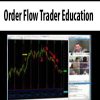
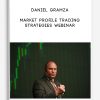


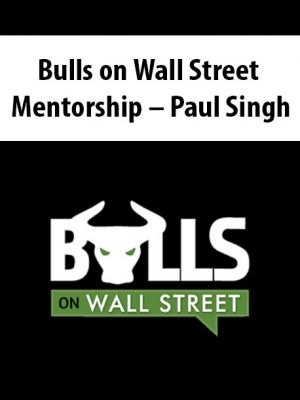


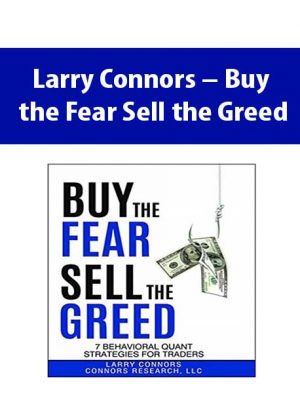
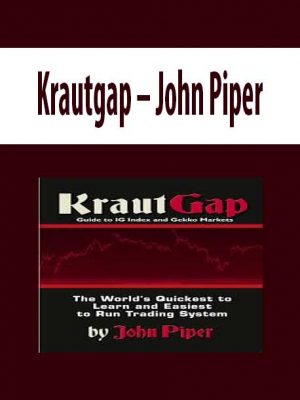
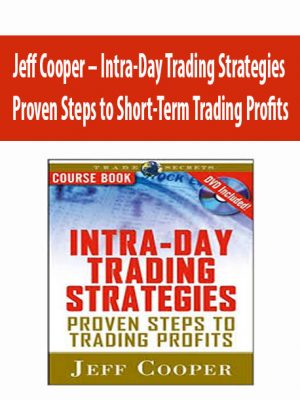


Smooth transaction. Thanks | Orderflows – Orderflows Inner Circle Video Club Access